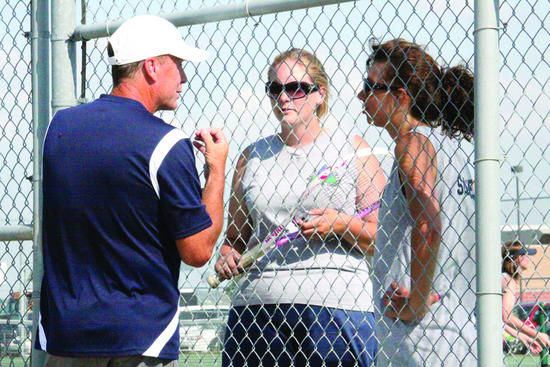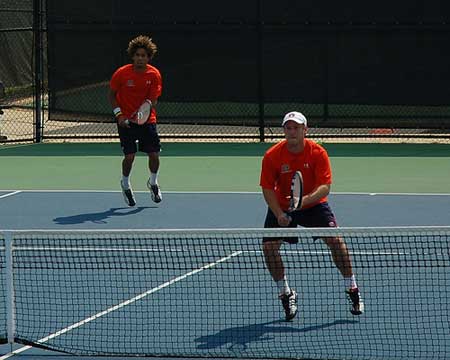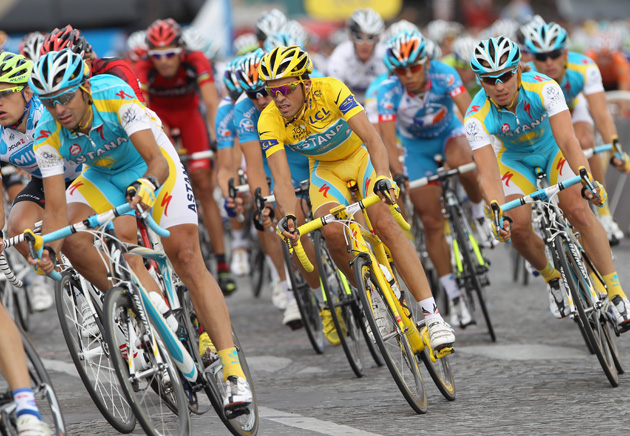Ten Tips To Help You Win More Matches NOW
 Saturday, July 28, 2012 at 04:47AM
Saturday, July 28, 2012 at 04:47AM  CAtennis
CAtennis  Here are some tips to assist you in winning more matches. Some of them are fairly basic but it's amazing how many high-level professional players end up repeating these rookie mistakes. Therefore, keep this checklist in mind and feel free to add to it anything that may help you with your particular game:
Here are some tips to assist you in winning more matches. Some of them are fairly basic but it's amazing how many high-level professional players end up repeating these rookie mistakes. Therefore, keep this checklist in mind and feel free to add to it anything that may help you with your particular game:
1. Get a proper warm-up. The warm-up is an integral part of most players' preparation for competition. Unfortunately, a lot of players tend to confuse the warm-up with the work-out. They miss a ball in the warm-up and then spend an indordinate amount of time trying to perfect the shot so that it won't happen in a match. Many times, these players completely ignore the remainder of their game and it is this part that usually causes these players' games to collapse later on. Instead of hammering drills that should have been covered in practice, attempt to spend the warm-up period to get your body (muslces, blood vessels, enzymes, aerobic metabolism) ready for physical activity. Pre-match warm-up is not the best time to "cram for the exam".
2. Understand your opponent. Not many players do a good enough job of getting to know their opponents' likes and dislikes. If you cannot review footage of your opponent prior to the match, spend a couple of minutes visualizing her game style and strokes and imagine how your weapons fit against against her weaknesses and how you can best neutralize her stregths. Even if you are COMPLETELY wrong, you will be in a better position to change your stride during the match than if you go into battle without a plan.
3. Stay flexible. Understand that a strategy that works in the beginning of the match may not be as successful as he match goes on. Therefore, keep looking for opportunities to win points through alternate methods. Be like more like a hunter who sets several traps and doesn't just wait in one clearing for the prey to arrive.
4. Stay positive. If you can win a point you can win a game; if you can win a game you can win a set; if you can win a set you can win a match. Don't get down on yourself simply because things aren't going your way on the scoreboard. If you can string a bad mistake by the opponent (point one) with a tough physical play by you (point 2) and a smart play by you (point 3), you are in great shape to win the game. All you have to do is believe in your game and your abilities.
5. Play one point at a time. A lot of players - whether they are up or down - think about the end result more than it's necessary. This is similar to a professional poker player who thinks about the $1Million jackpot during every hand rather than cards and chips on the table. Doing so brings way too much pressure into the mix and you end up overplaying or underplaying the point. Instead, try to think about ways to win each point. Learn from past mistakes and pattern but do not become obsessed by either the past or the future. Simply focus on that point and keep the end result somewhere in the back of your mind.
6. Make effective use of time. Use time - during the point as well as between points - to your advantage. A lot of players simply rush way too much between points. They don't allow their bodies (or minds) to recover from the stresses of the previous point. In addition, rushing only ensures that you will fail to learn the lessons of the past condemning you to repeat them in th future. Furthermore, rushing during the point - for example, by hitting flat/hard when you're in a defensive position - increases the chances that you will not have time to recover for the next shot (the faster the ball goes towards the opponent, the faster it will come back). As a result, learn how to make effective use of time - be it by going to the towel after long points or slow-balling your way out of trouble.
7. Don't become complacent. We covered this in a previous article. Briefly, allowing the opponent to hang around without crushing her spirit. When you're up, be more like a tiger who's gotten that much closer to the prey; the tiger doesn't let up - it ACCELERATES. It smells the blood and all the killer instincts get that much sharper. The closer it gets the more it wants to taste the blood.
8. Pressure the server. The more pressure you put on the server, the more energy (mental and physical) he has to expend in order to hold serve. The more energy the opponent utilizes on holding serve, the less energy he will have available to use against you on your serve. Therefore, make every effort to get as many deep returns in play in order to put the server on his heels. There's a school of tennis that advocates going for big returns (winners) as a general rule. This type of thinking fails to take into account the risks and rewards of such plays. For the most part, the serve is one of the top 2 weapons for most decent opponents (before or after one of the groundstrokes). Therefore, you are taking a huge risk in trying to hit a ball that's moving in an unpredictible manner (i.e., the serve is a serve; it's not a feed). If the serve is a sitter - fine; take a chance. But if it's not in your wheelhouse, do as much as you can to get the ball back in play and then grind your way out from a neutral position.
9. Don't hit your way out of trouble. There's an expression that goes along the lines of "for the person who carries a hammer everything looks like a nail". In tennis terms, a player may possess a huge weapon (e.g. forehand) and said player may be tempted to use it all the time - for good or for bad. The fact is that a 100mph shot followed by a 100mph shot followed by a 100mph shot, etc., loses it's "sting". As the point goes on, people become accustomed to the "pop" of the ball are no longer fazed by the speed. A 100mph shot that follows a 65mph "looper" with some spin/depth is, on many occasions, way more effective...it's just harder to adjusted to a changing tempo. Same with serves - if you keep dropping bombs, your opponents will just back up and wait for the ball to slow down. Use angles and spins to break up the rhythm before dropping the hammer.
10. Give your opponent the credit that she is due. In simple terms, you should seek to remain objective about your opponents. Too many players overqualify their own skills and underqualify their opponents. Listen, there's a reason why you are facing this particular player in this match. Somewhere along the line, she has done something well enough to get to "your level." Therefore, give her credit for being there and try to break down her game objectively. A lot of superior players (on paper) have been stunned by lesser players...players who may be fat; players without serves; players without backkhands; players who are old; etc. A fat player knows he's fat - the second he touches the ball he will tag it knowing full well that he might not have the juice to got he distance. A player without a big serve is expecting to be broken; however, he knows just as well how to break and how to maximize the openings you provide to him. An old player - the most dangerous of them all because she's SEEN it all - should be approached with the greatest degree of caution (things that are over the hill tend to pick up speed LOL). Therefore, stay objective and worry about carrying your trophy through customs only when the appropriate time comes.




